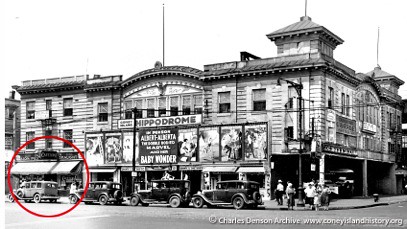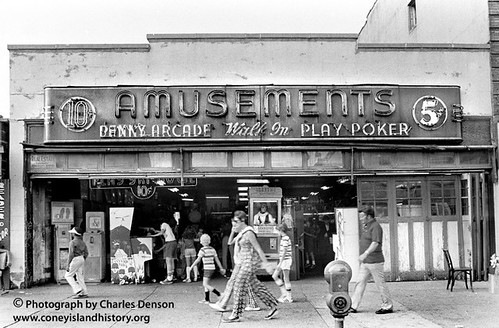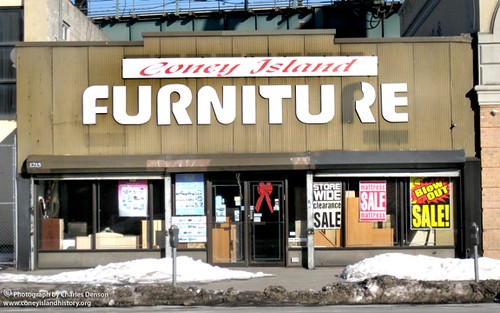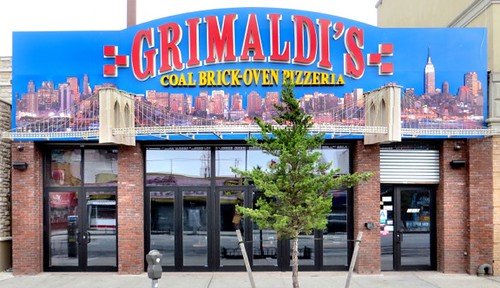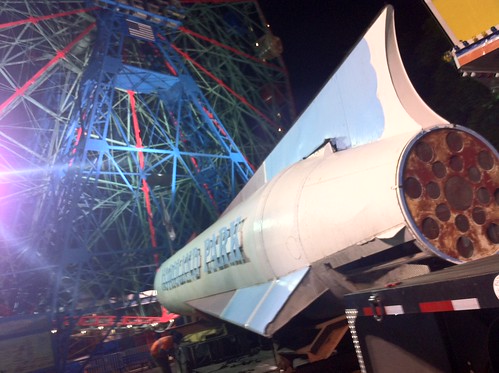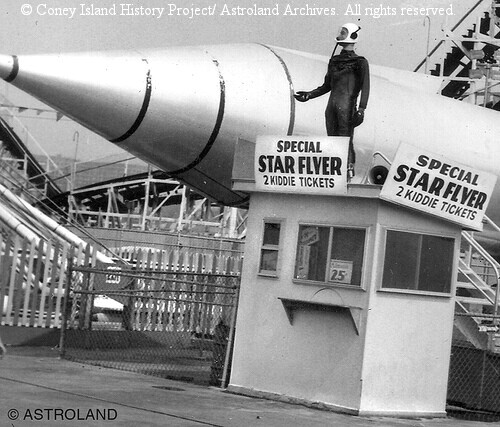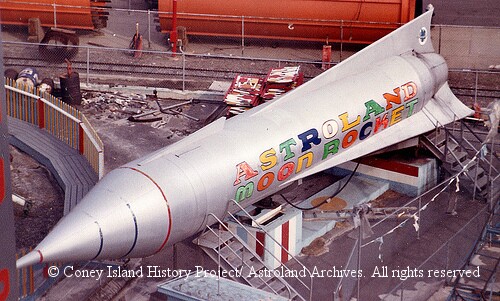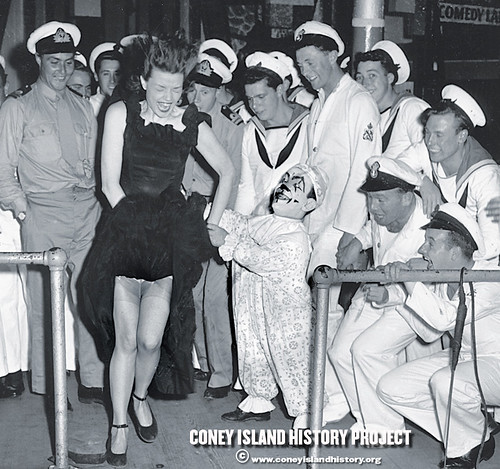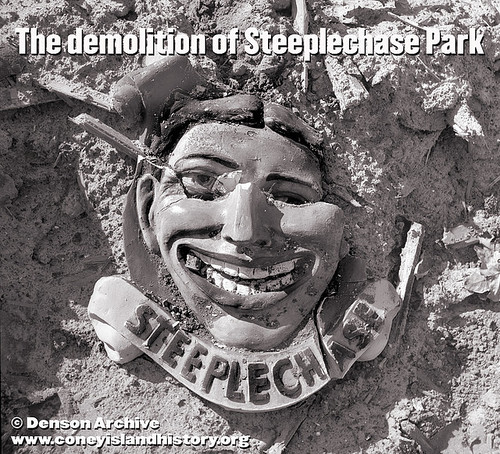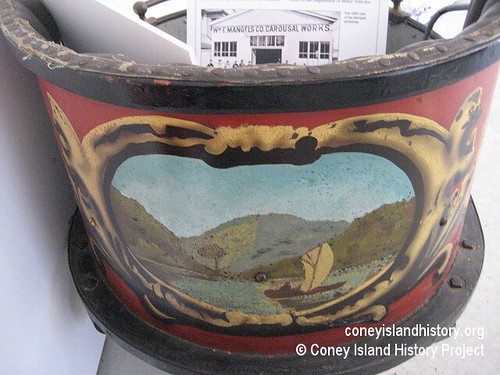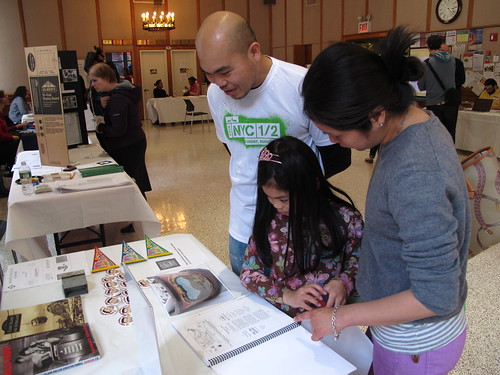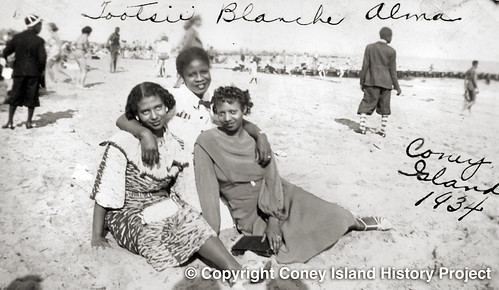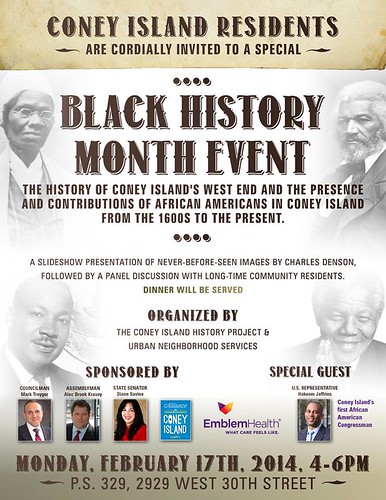
2014 marks the 10th anniversary of the Coney Island History Project! Ten years ago our oral history project began with a portable recording booth located on the boardwalk. The colorful booth-on-wheels, dubbed the "Memory Booth," had an air-conditioned recording studio illuminated by a skylight. Wooden "wings" opened from the booth to display our mission statement and historic photographs. We parked our booth in front of the Aquarium's education center during the day and in front of Astroland at night. Our program proved to be so popular that we later expanded to a permanent location.
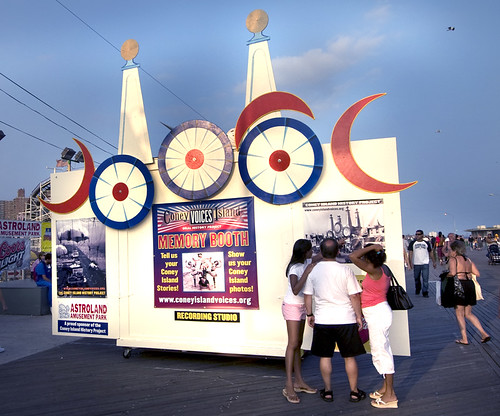
Coney Island History Project Memory Booth, 2005
The History Project was founded by Carol Hill Albert and Jerome Albert in honor of Dewey Albert, creator of Astroland Park, and opened its exhibit center below the Cyclone in 2007. In 2011 we moved to our current home beside the Wonder Wheel at the invitation of the Vourderis family, owners of Deno's Wonder Wheel Park. During the last decade we've recorded the oral histories of many departed Coney luminaries whose stories would have been lost forever. The voices of Jack Ward, Jimmy McCullough, Matt Kennedy, and Joe Rollino and others can be found in our archive.

Carol Hill Albert and Charles Denson in the Memory Booth, 2005
The Coney Island Hall of Fame pays tribute to pioneers and visionaries whose creativity and ingenuity helped shape and define Coney Island over the past century and was inaugurated on West 10th Street opposite the Cyclone roller coaster in 2005. Our exhibits have included "Land Grab: A History of Coney Island Development," "Woody Guthrie's Coney Island Years," "The Astroland Archives Photography Exhibit," "Coney Island Icons," "Luna Park Revisited," "The Dreamland Fire Centennial," and "Coney Island Bathhouses: A Lost Culture." In 2012, we presented the first solo show by local photographer Abe Feinstein, who has been documenting his neighborhood for more than 50 years.
2013 saw our recovery from Hurricane Sandy and the opening of two new exhibits: "The Curious Playland Arcade Art of Larry Millard" displayed several salvaged Millard murals as well as a full photo documentation of his work from the walls of the Playland building, which was demolished in February. We also celebrated the 30th anniversary of the Vourderis family's operation of the Wonder Wheel with a photographic history of the famous landmark.

"The Curious Playland Arcade Art of Larry Millard" Exhibit, 2013
In August, the 3rd Annual History Day presented by Deno's Wonder Wheel Park and the Coney Island History Project was the inaugural event at the new Dreamland Plaza on West 12th Street. The free event included a Coney Island history trivia contest, an interactive magic show, and performances by organ grinders from the Automatic Musical Instrument Collectors Association (AMICA) and the Carousel Organ Association of America (COAA) as well as the opportunity for visitors to hand crank the organs.
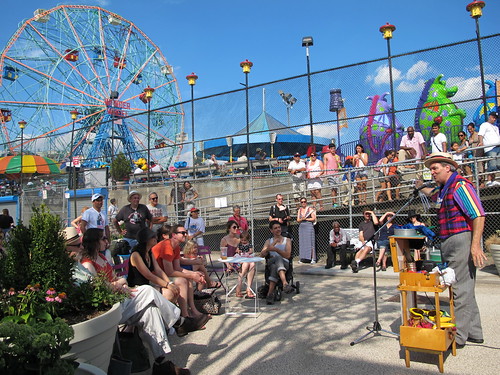
Prof. Phineas Feelgood's World of Magic at History Day, Dreamland Plaza, August 2013
History Project director Charles Denson's Sandy documentary "The Storm" premiered at the Coney Island Film Festival in September and was screened at the Brooklyn Art Council's Scene: Brooklyn Film Series commemorating the 1st anniversary of Sandy. In October, the New York State Marine Education Association (NYSMEA) presented the Herman Melville Literary Award to Charles Denson for his contributions to marine education through the Coney Island History Project, his books and his preservation efforts for Coney Island Creek.
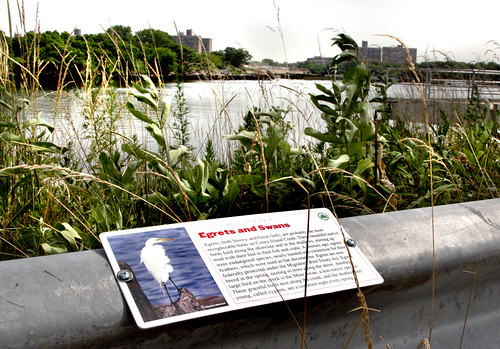
A series of informational plaques designed and created by Charles Denson were installed on the creek side of Kaiser Park, 2012
The 2014 season promises to be our most exciting yet. In late December our proposal for the return of the Astroland Rocket was approved by the City and we're now planning an extensive exhibit about the rocket and space-themed Coney attractions of the past. Ownership of the historic Rocket will be transferred to the History Project and the Vourderis family will provide a permanent home for it in Deno's Wonder Wheel Park.

Coney Island: The "Star Flyer" Rocket debuted in Astroland in 1962
From the balloons, blimps and biplanes of the early days of aviation to the Astroland-sponsored airshows by the Thunderbirds, Golden Knights and Blue Angels, flight demonstrations have drawn crowds to Coney Island.The Rocket exhibit will cover the history of flight-themed attractions in Coney Island, encompassing science, amusements, photos and films. Ever since Thompson and Dundy brought "A Trip to the Moon" to Steeplechase Park in 1902, space travel and aeronautics have been a fantasy theme in Coney's amusement parks. When the Star Flyer Rocket debuted in 1962 as the first ride in Coney's new space-age theme park, it was called the "Cape Canaveral Satellite Jet" (TIME), "The Spaceship Auditorium" (Billboard) and the "Cannonball Adderly Rocket" in anticipation of Adderly dedicating the rocket for Astroland's official opening on July 1, 1962. The rocket was rechristened the "Astroland Moon Rocket" in 1963.
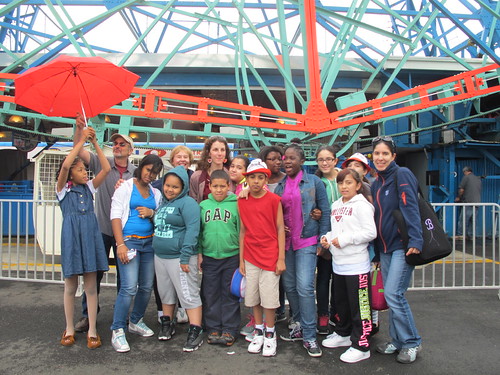
PS 16 Students Visit the Wonder Wheel on Field Trip to Coney Island History Project, May 2013
This year we hope to continue our school programs, bringing Coney Island history to local schools and giving educational tours. Last year we were invited to work with sixty students at PS 226 and an after-school program at PS 16. We produced a film based on their artwork and poetry. Our unique walking tours continue to be offered year-round, attracting current and former New York residents as well as visitors from across the country and around the world.
We are now revamping our web site and online oral history archive. While the new site is under construction, some pages will be intermittently unavailable. Please be patient during the redesign, once it is complete you will see many new features, including the Director's Blog.

Visitors pose for souvenir photo with the Spook-A-Rama Cyclops at Coney Island History Project, August 2013


